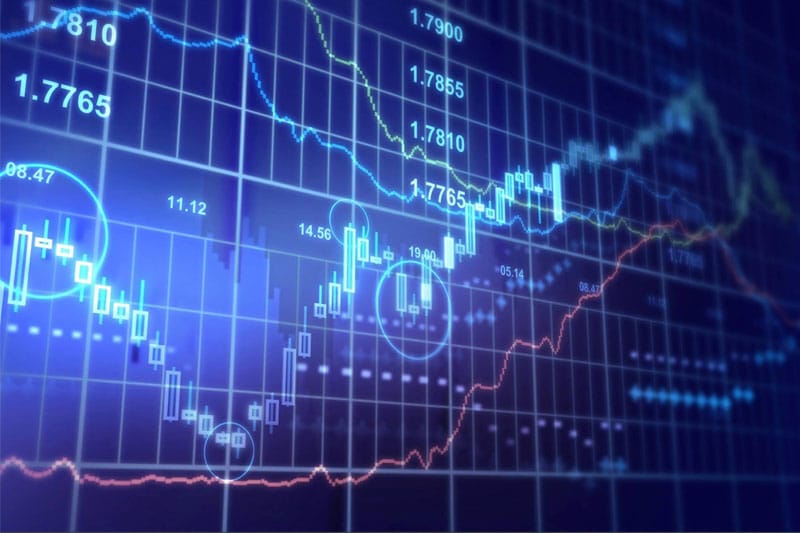
Recognising Probabilistic Thinking
Probabilistic thinking is a critical cognitive tool derived from probability science. It is, at its core, a mental framework that allows us to deal with the inherent uncertainties of life – and, the uncertainties of trading. Rather than attempting to predict a single, absolute event, probabilistic thinking operates on the principle of assessing the likely chance of multiple outcomes.
It is impossible to predict future market movements with absolute certainty in the trading world. Because of the inherent unpredictability of financial markets, every decision carries a certain level of uncertainty. As a result, probabilistic thinking has become an essential skill for traders, as it involves quantifying uncertainty and incorporating it into decision-making.
To grasp the essence of probabilistic thinking, we must first comprehend the concept of probability. Probability is a mathematical concept that is used to express uncertainty. It is a metric that quantifies the likelihood of a specific event occurring, typically expressed as a number between 0 and 1, or 0% and 100%. A probability of one (or 100%) indicates absolute certainty that an event will occur, whereas a probability of zero indicates absolute certainty that an event will not occur. Anything in the middle denotes varying degrees of certainty or uncertainty.
So, how does this relate to trading? Consider the purchase of a specific asset. A probabilistic trader does not simply ask whether the stock price will rise (an absolute event). Instead, they mull over various scenarios (multiple outcomes) and their probabilities. For example, they may estimate that there is a 40% chance that the asset will rise by 5%, a 30% chance that it will remain unchanged, and a 30% chance that it will fall by 5%. This way of thinking enables the trader to anticipate a variety of scenarios (both good AND bad) and plan strategies accordingly.
The beauty of probabilistic thinking is its acceptance of uncertainty. It assists traders in avoiding the common stumbling block of predicting specific outcomes, which frequently leads to overly optimistic or pessimistic expectations. By thinking not in absolutes but in probabilities traders can approach their decisions more objectively and strategically by considering a range of potential outcomes and prepare for all of them.
Probabilistic Tools in Trading
Trading is fraught with uncertainty and unpredictability. As a result, traders are constantly looking for methods to quantify this uncertainty and provide an insightful glimpse into potential market outcomes. This has resulted in the development of a set of probability-based tools and techniques that traders use to evaluate the likelihood of various market scenarios.
Statistical analysis is a broad discipline that deals with the collection, organisation, interpretation, presentation, and modelling of data and forms the basis of all probabilistic thinking. It is used by traders in trading to infer trends, correlations, and patterns from historical market data. For example, a trader might use regression analysis, a statistical technique, to determine the relationship between a specific instrument’s price and various influencing factors. Traders can gain a more nuanced understanding of potential future price movements by assigning probabilities to different outcomes based on these relationships.
To test the validity of their statistical analysis traders may then introduce a novel, dynamic approach to probabilistic analysis using Monte Carlo simulations. This method, named after the famous Monte Carlo Casino because of its inherent element of chance, involves using random variables to simulate a model of a specific system – in this case, the financial market. A Monte Carlo simulation, in essence, generates a wide range of potential future market scenarios based on random sampling of input data. Each scenario has a probability associated with it, allowing traders to assess a range of potential outcomes and their likelihoods. This technique is especially useful for evaluating complex instruments and strategies because it takes into account a wide range of market variables and their interactions. From this information traders can better understand the probability of potential losses (and profits) their system may give in an uncertain future.
On from the Monte Carlo analysis other statistical tools can bring a different perspective to probabilistic trading analysis. Each different tool enable traders to quantify and incorporate different elements of the uncertainty inherent in financial markets into their decision-making systems. This leads to a more strategic assessment of trading strategies where potential outcomes are assessed more objectively, and ultimately the risk more effectively by combining these tools with a probabilistic mindset. Incorporating probabilistic tools into a trading system and portfolio can thus significantly improve the ability to navigate the volatile trading world and boost overall trading success.
Probabilistic reasoning and scenario analysis
In the volatile world of trading, scenario analysis emerges as a powerful tool that works in tandem with the other statistical analysis tools. Scenario analysis is defined as the process of evaluating and analysing potential future events by taking into account alternative plausible outcomes. When used in trading, it aids in forecasting a variety of potential market scenarios, each with an associated probability, providing traders with a comprehensive view of the market’s potential risks and rewards.
Scenario analysis, at its core, embraces the inherent uncertainty of financial markets. It recognises that the future is not a single, predetermined outcome, but rather a series of possibilities, each with varying degrees of probability. This is consistent with the probabilistic mindset, which encourages considering multiple outcomes rather than focusing on a single forecast. Traders can create a multidimensional understanding of the market by combining these two approaches, capturing both the diversity of potential outcomes and their associated probabilities. The chance of a future occurrence and the chance of different outcomes being derived from it.
In trading, scenario analysis typically begins with the identification of factors or variables that can have a significant impact on market conditions. They could be fundamental or statistical in theory. These factors are then used by traders to create a set of plausible future scenarios. Each scenario represents a distinct set of factor outcomes that, when combined, capture a wide range of potential future market states.
When it comes to assigning probabilities to these scenarios, traders can estimate the likelihood of each scenario using either their knowledge, analytical tools, and/or judgement. This procedure may include quantitative methods such as statistical analysis or Monte Carlo simulations, as well as qualitative evaluations based on market insights and expert opinions; depending on the trading method and style being used.
After establishing a set of scenarios and their associated probabilities, traders can assess their potential impact on their trading positions. This entails determining how each scenario might affect the value of their investments and then using that information to make informed trading decisions. A trader, for example- in a most basic sense, may decide to close their position if they think a particularly damaging scenario is likely, or they may decide to increase their exposure to a specific asset if a favourable scenario is likely. The reality however is more complex, nuanced and uncertain than this.
Scenario analysis is not a one-time event. Traders must have the ability to update their scenarios and probabilities as new information becomes available and market conditions change. This iterative process is similar to the principles of Bayesian analysis, which is a cornerstone of probabilistic thinking and involves updating probabilities based on new evidence.
Scenario analysis, when combined with probabilistic statistical thinking, provides a solid framework for navigating the complex and uncertain trading landscape. It enables traders to look beyond point forecasts and single-outcome predictions, giving them a more complete and nuanced understanding of the potential future market. Traders can make more informed, strategic, and risk-aware decisions by considering multiple potential futures and their associated probabilities, which is the ultimate goal of probabilistic thinking in trading.
Risk management and probabilistic reasoning
The key component of trading is risk management, which aims to strike a balance between the likelihood of profit and the risk of loss. Risk management is a collection of procedures and methods designed to lessen risk and prevent unfavourable outcomes. A key building block for efficient risk management in trading is probabilistic thinking, and its emphasis on evaluating the likelihood of various future market outcomes.
Instead of concentrating solely on the most positive scenario, probabilistic thinking encourages traders to take into account a range of possible market outcomes, including negative outcomes. This way of thinking can direct how stop-loss orders are established in the context of risk management. A stop-loss order is a planned directive to sell an asset if its price drops to a particular level, thereby reducing potential losses. Probabilistic analysis is frequently used to guide the placement of the stop-loss order. To determine a stop-loss level that fits their risk appetite and the likelihood of extreme price swings, traders may take into account the historical volatility of an asset, the state of the market, and the potential range of price movements.
Portfolio diversification, another important risk management tactic, also depends on probabilistic thinking. To reduce exposure to any single investment, diversification involves spreading investments across a variety of trading methods and asset classes. Diversification, seen from a probabilistic perspective, involves controlling the chances that various market outcomes will result in a significant negative outcome. Investors can build a portfolio that takes into account a wide range of potential market scenarios and their associated probabilities by investing in a variety of assets, each with its own risk-reward profile and correlation to market events. If a particular asset or market sector experiences a downturn, this strategy can lessen the risk of the whole portfolio suffering significant losses.
The risk profiles of investments are never constant because markets are dynamic entities. This calls for ongoing re-evaluation and adjusting of risk levels and portfolio balancing. This adaptive process is supported by probabilistic thinking, which encourages the routine updating of market outcome probabilities in response to fresh information. As an illustration, if a trader notices a rise in market volatility, they may re-evaluate the likelihood of significant price swings and modify their stop-loss orders or portfolio allocation accordingly to lessen the possible risk to the trading capital.
Finally, sizing trading positions, another crucial risk management technique, can be informed by probabilistic thinking. Taking into account the trader’s total capital as well as the risk involved in the transaction, position sizing involves determining how much of an instrument to buy or sell. This choice can be made using probabilistic reasoning by taking into account the likelihood of various trade outcomes. If the likelihood of a favourable outcome is high, a trader might opt to take a larger position; alternatively, if the trade entails a high risk of a negative outcome, a trader might opt to take a smaller position.
In essence, probabilistic thinking gives traders a quantitative and systematic method for managing all elements of risk. In order to manage risk and succeed in trading in the face of market uncertainty. It promotes taking into account multiple market outcomes, ongoing risk reassessment, and strategic decision-making.
The impact of probabilistic thinking on trading success
Probabilistic thinking has a transformative impact on trading, contributing significantly to a trader’s success by influencing decision-making processes, risk management strategies, and overall performance. It encourages traders to view markets through the lens of probabilities, offering a more nuanced understanding of potential risks and rewards, thereby enhancing their ability to navigate market uncertainties.
Foremost, probabilistic thinking refines the decision-making process in trading. Traders operate in a realm of constant uncertainty, where the future is unknown, and outcomes are typically not binary but exist within a range of possibilities. Probabilistic thinking encourages traders to step beyond simplistic deterministic predictions and instead contemplate a spectrum of potential outcomes. This mindset nurtures a more comprehensive approach to trading decisions, allowing traders to weigh the likelihood of various scenarios before committing to a trade. This can reduce the risk of rash decisions based on unfounded expectations or emotional reactions, leading to more informed and rational trading choices.
In the realm of risk management, probabilistic thinking is indispensable. By focusing on the potential range of outcomes and their associated probabilities, traders can make astute judgments about risk-reward trade-offs. Probabilistic thinking can inform key risk management practices, such as setting stop-loss orders, diversifying portfolios, and adjusting position sizes. It fosters a systematic and disciplined approach to risk, enabling traders to establish strategies that align with their risk tolerance and investment goals. The capacity to manage risk effectively is a critical determinant of long-term trading success, highlighting the value of a probabilistic mindset.
Probabilistic thinking also enhances a trader’s adaptability, a crucial trait in the ever-evolving landscape of financial markets. As new information emerges, the probabilities assigned to potential outcomes may need adjusting. Traders with a probabilistic mindset are poised to assimilate this new information, reassess their probabilities, and adapt their strategies accordingly. This flexibility can offer a competitive edge, ensuring traders remain responsive to market changes and are prepared for a variety of scenarios.
Moreover, probabilistic thinking promotes a growth mindset and continuous learning. By acknowledging that trading involves dealing with probabilities and uncertainties, traders are less likely to be discouraged by losses or setbacks, viewing them instead as opportunities for learning and refining their strategies. This mindset can enhance emotional resilience, reducing the likelihood of stress and burnout, which can significantly impact a trader’s performance over time.
Lastly, probabilistic thinking can lead to better performance evaluation. Instead of attributing success or failure to skill or lack thereof, a probabilistic approach recognizes the role of chance and variability in trading outcomes. This nuanced understanding can lead to more accurate performance assessments, helping traders to differentiate between genuine skill and random luck, and identify areas for improvement.
Probabilistic thinking provides traders with a robust framework for navigating the uncertainties of financial markets. By fostering improved decision-making, effective risk management, adaptability, continuous learning, and accurate performance evaluation, it serves as a cornerstone for achieving trading success.
Originally posted on the BMAMS website
The post Navigating Market Uncertainties Through Probabilistic Thinking first appeared on trademakers.
The post Navigating Market Uncertainties Through Probabilistic Thinking first appeared on JP Fund Services.
The post Navigating Market Uncertainties Through Probabilistic Thinking appeared first on JP Fund Services.










































